READY TO GET STARTED?
REQUEST A FREE ESTIMATE
Fill out the form below or call (888) 466-7849 for a free, no-obligation estimate.
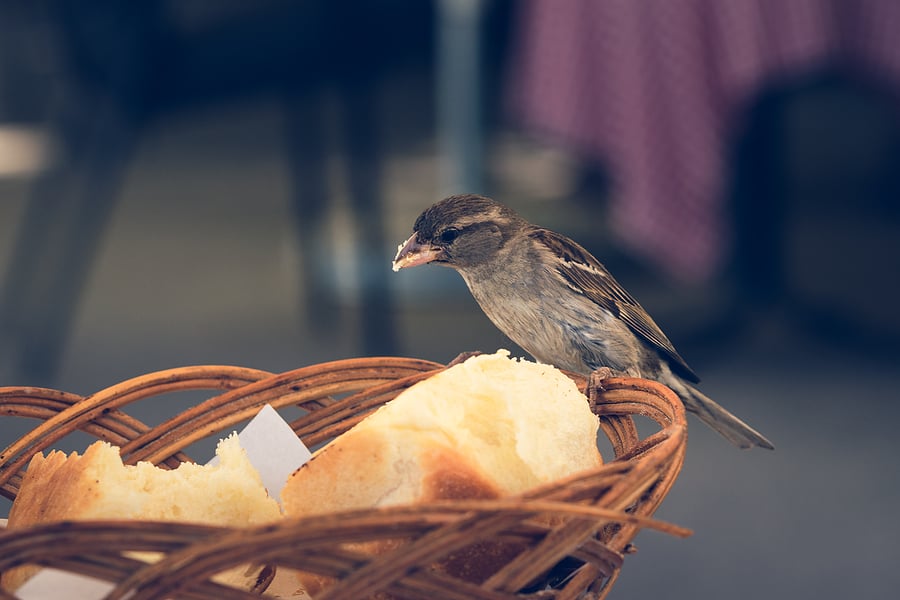
Wildlife creatures can bring a host of issues to your business. Some of these can disrupt your business, create unsanitary conditions, and drive customers away. The first step in dealing with these nuisance pests is knowing the type of animal you are dealing with and how to prevent them. We break down which ones to watch out for around your business and give some easy wildlife prevention tips.
Birds
Birds can pose a major health threat to your business as they can spread diseases and contaminate your business space. Their droppings can cause quite a mess and harbor diseases and parasites. These acidic droppings can corrode and ruin your business roof, walkways, windows, ledges, signage, and even your customers’ vehicles. These pests can also easily access and damage the roofline and chimney, which can lead to problems with your electrical wiring.
Rats & Mice
Rats and mice are looking for a place to eat and sleep. They can easily invade your business by entering through the smallest crack or hole that is unsealed. Just like birds, rodents can spread disease throughout your business, making it unsafe for both your customers and team members. These creatures are also known to gnaw on merchandise, packaging, equipment, and electrical wiring.
Squirrels
Squirrels can look cute and cuddly, but they are also known to create structural damage and disturbances at businesses. These creatures are in search of a food source, and you can tell if they have been searching around in your property by seeing uprooted plants and flowers, dug up holes, and eaten nuts or fruits. Squirrels are also known to create holes in roofs, chew on wires, damage vents, and create a musty smell from their urine if they’ve infested inside the building.
Utilizing preventative measures is the key to ensuring wildlife don’t infest your business and disturb your customers!
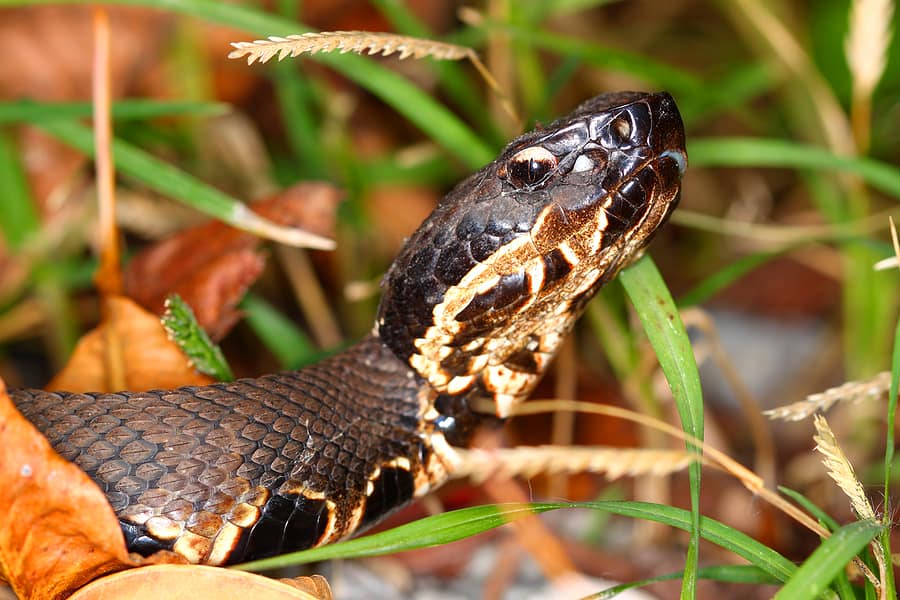
As the weather heats up, snakes will be on the move, emerging from hibernation in search of food. Snake season peaks in the summertime, making your chances of an encounter with these reptiles increase. Here are 7 common snakes you may encounter this summer, along with snake prevention tips to help you avoid these pests while outdoors.
Eastern kingsnakes are large snakes, usually 3-4 feet long, shiny black in color with white or yellow bands. They have a short, blunt snout, rectangular looking head, and small beady eyes. They’re usually found in protected areas such as woods, overgrown vegetation, cluttered areas, etc. and most active during summer months in the morning hours. If you encounter a kingsnake, use caution; they are non-venomous but strong constrictors and may bite if handled. Keep eastern kingsnakes away from your home by limiting their food sources – other snakes, lizards, rodents, and birds, removing clutter and debris, storing wood away from your home’s exterior, use a snake repellent product, or contact a pest control company specializing in snake control.
Rat snakes are large, 3-6+ feet long, and black and yellow with stripes, or gray with darker patches. You can expect to find them in wooded areas, overgrown vegetation, swamps, abandoned or vacant buildings. Though they’re non-venomous, they may bite if handled or threatened and will climb for food. Prevent rat snakes around your home by reducing potential food sources – rats, mice, squirrels, birds, and bird eggs – using a snake repellent product, or professional snake control by a pest or wildlife removal company.
Garter snakes are small, usually 1/5-4 feet long, with three yellow stripes running vertically down a dark colored body. They’re active during day or night hours and often found in suburban areas under debris or boards – anywhere that provides cover for them – and around water, grassy areas, woods, and marshes. Garter snakes are common throughout the Southeast and most of the U.S. Like other non-venomous snakes, they pose no real threat unless bothered. Keep garter snakes away from you home by limiting preferred food sources – worms, slugs, frogs, toads, salamanders, fish and tadpoles – removing items that can be used as cover (wood, debris, etc.), and using a snake repellent product.
Black racers are large snakes, 5 feet long or larger, with slender black bodies and sometimes a white chin. Juvenile black racers are grayish in color with darker blotches. Black racers are common through the eastern U.S. and most often seen near forest edges, fields, or wetland outskirts during the day in warmer months. They’re non-venomous and usually timid, fleeing when threatened. To keep them away from your home, reduce food sources – insects, lizards, snakes, birds, rodents, and amphibians – and apply snake repellent products.
Brown snakes are small, 6-13 inches long, and usually brown but may be yellowish, reddish, or grayish-brown with darker spots on the back. You’ll find them in residential areas, wooded areas, near wetlands, and in urban areas under wood, leaves, and debris, or any other area with adequate ground cover. Brown snakes are the most common snake found in urban areas. They’re most active during evening or night hours, occasionally seen crossing roads. Brown snakes are non-venomous and pose no serious threat although may bite if threatened. While they’re not dangerous, you may not want to find one hiding out around your home. Prevent this by removing clutter and debris from your yard and consider using a product that brown snakes find repellent.
Copperheads are large snakes, usually 2-4 feet long, with a heavy body and a triangular shaped head. They are tan to brown in color with hourglass shaped darker bands running across the body; juvenile copperheads have a distinct yellow tail tip. You may encounter a copperhead snake in suburban areas or in semi-protected areas like woods or swamps. They’re common throughout central and eastern U.S. with the exception of some areas in south Georgia and all of Florida. Copperheads are venomous and dangerous and may bite if threatened. Use caution when outside in the summer, especially at night. Deter copperhead snakes from hanging out around your house by reducing potential food sources – mice, small birds, lizards, small snakes, amphibians and insects. If you see a copperhead, contact a wildlife control company to safely remove it.
Cottonmouths, also called water moccasins, are large snakes – 2-4 feet in length – with a very heavy body and a distinctly triangular head. Their color varies from solid brown or brown or yellow with dark crossbands with a white mouse (inside); juveniles have a yellow tail tip. When threatened, cottonmouths display with the head in the middle of their coiled body and mouth wide open. As the name “water moccasin” suggests, cottonmouth snakes prefer to inhabit freshwater, swamps, river floodplains, and heavily vegetated wetlands. While they’re most common throughout coastal regions, cottonmouths are prevalent across the southeast U.S. They are active day and night but more likely to be seen when foraging for food at night in warmer months. Avoid cottonmouths if you come in contact with one, they are venomous and may bite if threatened. Use caution around fresh water habitats in the summer.
Your Guide To Summer Pest Control
Watch Out for These Stinging Pests
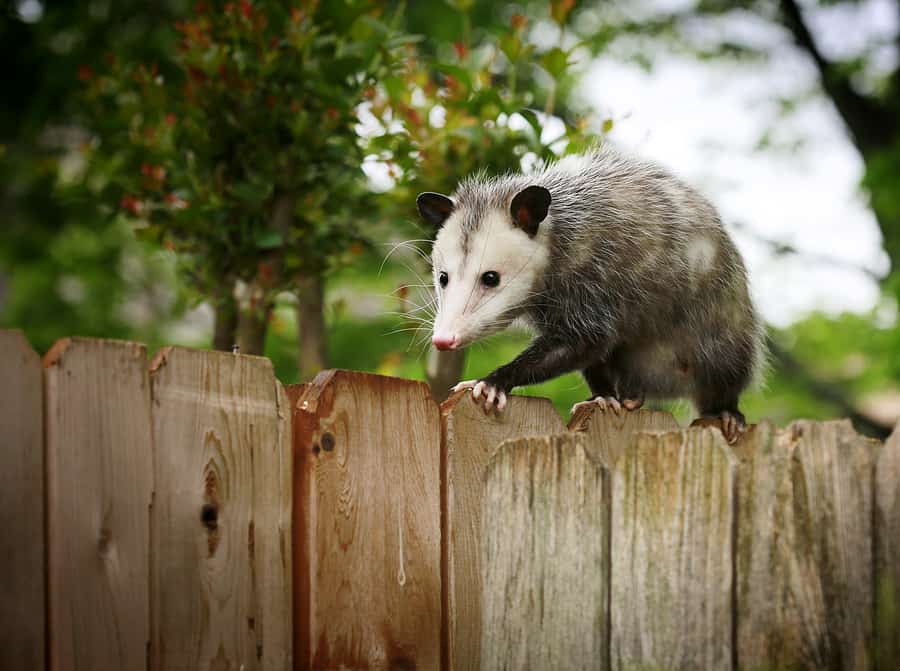
It’s true – many wildlife creatures invade and infest homes during the colder months of the year. However, there are still plenty of pests that are active and looking for a place to inhabit. Knowing which types are prevalent this season and how to prevent them can help you protect your home and family.
Snakes
As coldblooded animals, snakes get their energy from the sun. Because of this, snakes are more active during the warmer months as they require more energy to mate. You’ll typically see snakes out in the early morning and late evenings to avoid the high heat of midday. When they aren’t out, snakes like to hide out in cool, dark places such as underneath rocks and decks. You could also find them hiding out in your basement if they’ve gained access.
To keep nuisance pests from infesting your property it’s important to keep your lawn neat and clean. Clean up any yard clutter, such as piles of leaves and wood. Keep your grass mowed to eliminate coverage and trim bushes and hedges regularly. Always check your garage, garage doors, windows, and exterior doors for gaps and seal any openings.
Opossums
During the spring and summer, opossum females care for their young, meaning they are more active in searching for food to nourish them with. These animals are nocturnal and search for food at night. During the day, possums will hide in trees where they will stay until the evening. While they eat unwanted pests such as snails, cockroaches, spiders, and rats, they also eat garbage, fruit, grass, and roadkill.
To prevent opossums, keeping food from being left out outside your house is crucial. Make sure you bring in pet food and water from outside. Pick up any fruit that might have fallen from trees, including tossing out the rotten ones. It’s equally important to keep your garage doors, pet doors, or unscreened windows closed during the night.
Rats
Rats are active year-round, but the warmer weather provides them with more sources of food. These rodents can reproduce very quickly and controlling them can become difficult once they’ve infested. Rats will typically make burrows before wintertime, building these under buildings, concrete slabs, around lakes and ponds, and even near the garbage. These wildlife creatures can be a risk to humans as they can contaminate food, chew wires causing fire hazards, and their urine and feces can cause health concerns.
Taking necessary precautions before you start seeing rats is the key to preventing them. Check around the exterior of your home and seal up any cracks, crevices, and holes found in the foundation or siding. Remove clutter throughout your garages and storage areas, along with using plastic storage instead of cardboard. Keep your kitchen clean from any crumbs and spills and take your trash out regularly.
If you’ve taken the necessary steps to prevent these common wildlife but are still seeing them, it might be time to call your local pest control company. They’ll be able to assess the wildlife issue and provide you with the best wildlife control and wildlife exclusion options.
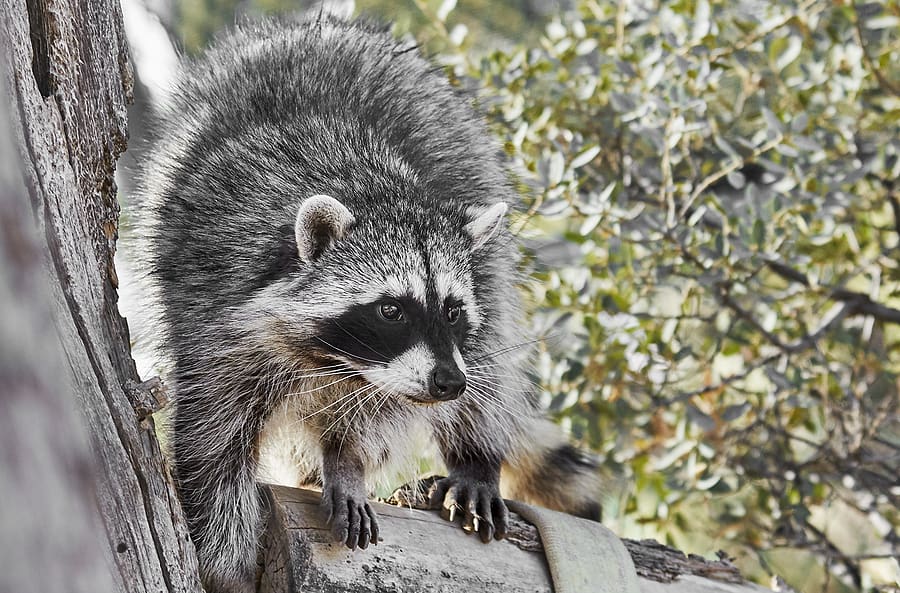
Warmer weather triggers the emergence of animals from hibernation. What many homeowners don’t realize is that wildlife will sometimes take refuge inside your home during the cold winter months. Once the weather starts warming up, these overwintering pests will start waking up and come out in droves looking for food and water. While some wildlife may be harmless, others can cause significant damage to both your home and your health. Some pests leave feces behind that can contaminate your food, kitchen surfaces, and even the air inside your home. Other pests can chew through wood and wires in your attic and walls, putting you at risk for fires.
Some common spring wildlife that can cause issues for homeowners include birds like swallows and sparrows; rodents like rats and mice; bats; squirrels; and raccoons. Birds use eaves, vents, and holes in the roof to make nests. Bird nest removal and bird control is regulated and usually best left to professionals. Rodents are some of the most common nuisance pests, getting inside through tiny spaces and reproducing quickly. Chewing and contamination are huge problems with rodents. While not as common as some of the other wildlife mentioned previously, bats can cause problems for you in the springtime. Bats will usually roost in gable vents and soffits but can also get into your home through the chimney or holes that they can use to access the attic. Larger mammals like squirrels and raccoons can get into attics and chimneys and even crawlspaces and basements. They are some of the most destructive spring wildlife, chewing through materials in your home and leaving behind huge messes.
So what can you do to keep these animals from seeing your home as a safe haven? Check out these tips to help control wildlife this spring.
What to Know About Fleas & Ticks
Commercial Mosquito Control: A No Spray Way for Your Business
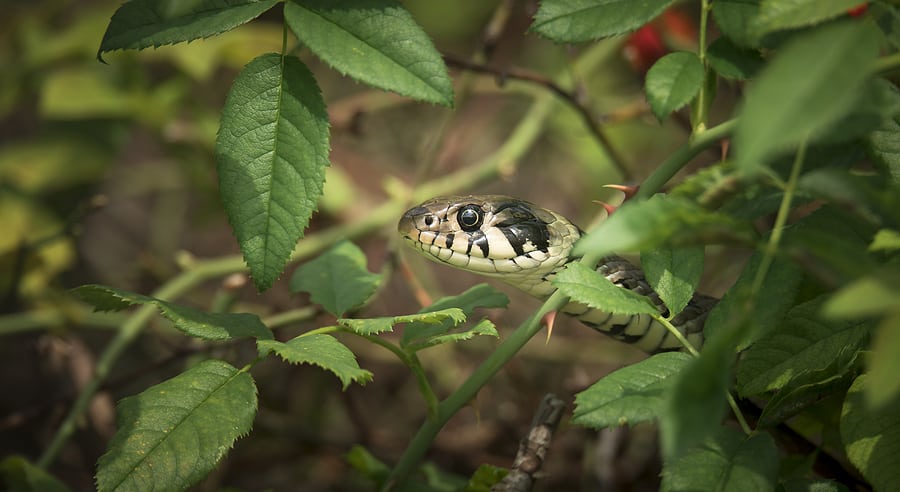
Snake season in Georgia starts in spring and runs through late fall. As the temperatures start to warm up, snake activity in our area will increase. As snakes emerge from hibernation, they will go in search of one thing: FOOD! This quest will often lead them into our backyards, gardens, and even local parks. With snake season just around the corner, now is the time to take action. Here are some snake prevention tips to help you prepare for snake season.
Snakes will use anything they can find for cover. Take the time now to clean up leaf litter, fallen logs, piles of bricks and rocks or anything else snakes can use as a hiding spot. If you can’t remove them, try to elevate them off the ground. Keep your lawn and any other surrounding areas with grass mowed short. Snakes will use tall grass as cover. Low hanging growth from trees, shrubs, hedges, etc. provide natural places for snakes to climb and hide. Keep them trimmed back from your home and off the ground. Discard any mulch or grass clippings away from your property as snakes will burrow into these for a sheltered hiding space.
Snakes will use holes in the exterior of your home to gain access inside. Carefully inspect the outside of your house for holes, making sure to check under roofs, under the house, in skirting, on garages, etc. Repair or block any openings that you find.
Snakes will often go after hatchlings and bird eggs. If you have chickens, ducks or any other birds, make sure their pens or aviaries are kept tidy and in good repair.
Snakes will feed on rodents, frogs, and other insects. Keeping these pests away from your home will help keep snakes away, as well. Clean up spilled or uneaten birdseed from underneath feeders; keep outdoor trashcans sealed with tight lids; feed your pets indoors when possible; if you must feed outdoors, feed once or twice per day and bring food and water bowls indoors in between feedings; seal pet food and bird seed in plastic or metal containers with tight lids.
Moisture also attracts rodents, frogs, and other insects that snakes feed on. Eliminating moisture will help make your property less attractive to snakes. Eliminate any areas of standing water; fix leaky pipes and spigots; try to avoid overwatering your lawn; consider enclosing your crawlspace.
Establishing a routine pest control service helps prevent nuisance pest problems before they get out of hand. By keeping these pest populations under control, you decrease the risk of snakes by eliminating potential food sources.
Most snakes that are encountered are non-venomous; there are some venomous snakes in our area that you should be careful to avoid, however. If you must be outdoors during snake season, wear long pants, long sleeves, gloves, and closed toed shoes. If you go outside at night, take a flashlight, lantern, or torch. If you do encounter a snake, don’t go near it and don’t try to kill it. Stay calm, keep your pets and children away, and allow the snake to move away on its own. Back away slowly. If you choose to, contact your local wildlife control company who can come and properly identify the snake and safely relocate or eliminate it.
4 Reasons For A Yellow Lawn and How To Fix It